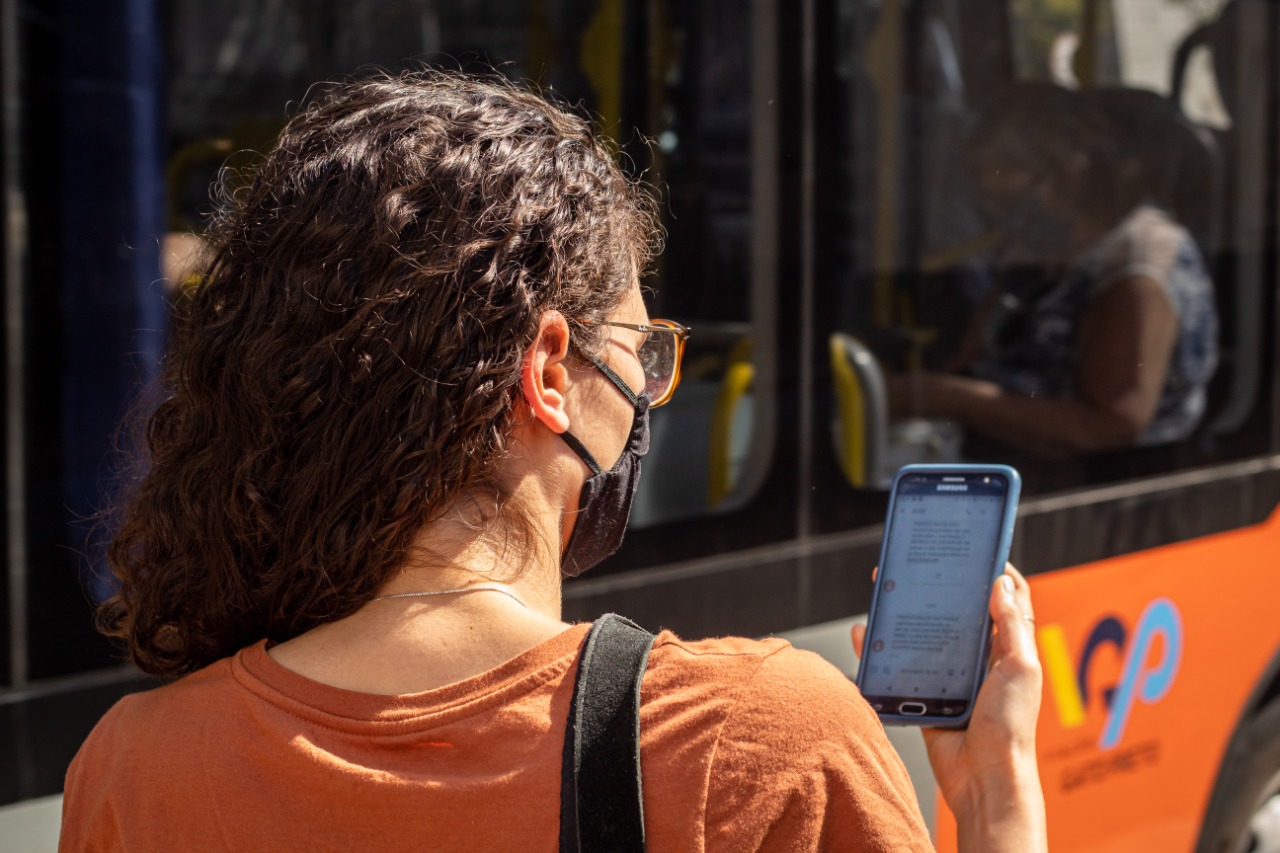Among cities’ many urgent needs since the pandemic struck a year ago, communicating effectively with the public has been key. The challenge is not just providing basic information about COVID-19 and its effects but also finding the right words and images to encourage people to protect themselves and others from the coronavirus.
As misinformation about the pandemic continues to spread, this is easier said than done. But cities are uniquely positioned to meet the challenges COVID-19 presents, and many urban leaders around the world have responded with timely, accurate and empathetic messaging.
We’re highlighting six cities within the Partnership for Healthy cities global network that have created COVID-19 communication campaigns in recent months to promote awareness and healthy behaviors. Adapted to meet local needs, most of the campaigns are based on the 3 W’s: —wear a mask, wash your hands and watch your distance.
For more city campaigns, check out this video.
São Paulo, Brazil surveyed residents first
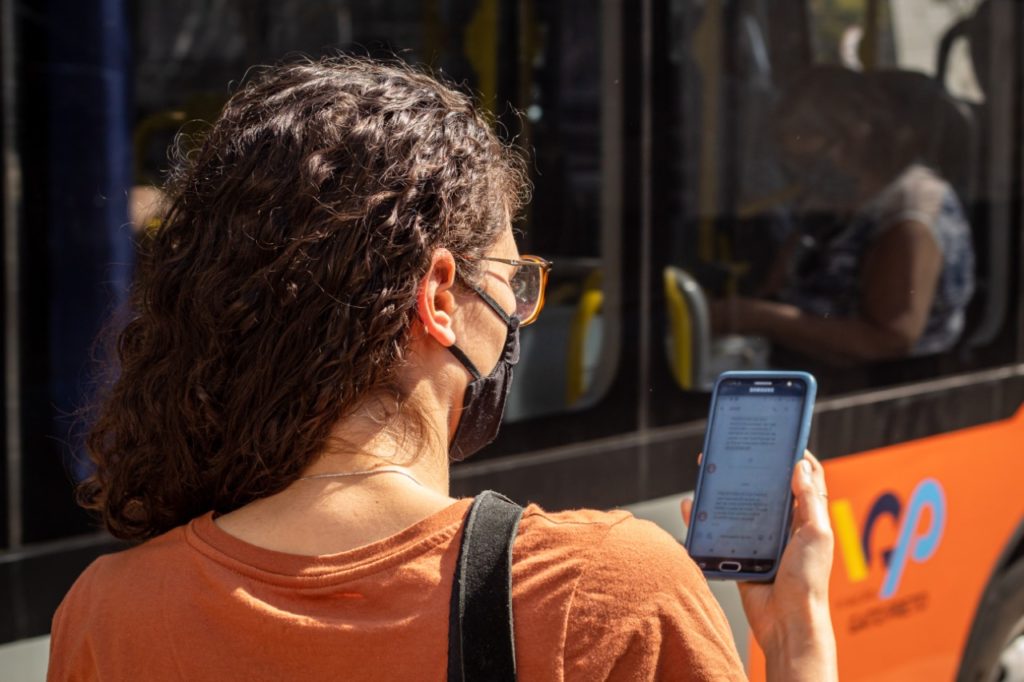
A resident of São Paulo received a text message encouraging social distancing.
A handful of cities in the Partnership were able to conduct research before creating campaigns, to try to create messages that would resonate effectively at the local level. The hope was that, with the initial months of the pandemic behind them, residents might have ideas on how to boost adherence to the 3W’s.
São Paulo sent messages to millions of local mobile phones via text—the first-time text messaging had been used for public health in the city—but only after developing messaging based on an extensive survey with residents conducted via phone. Survey results showed, for instance, that residents would be motivated by concern for their family and friends and the idea that it was their duty to protect others.
Follow-up behavioral research concluded that the text messages sent by the city were effective. For example, people who received a message urging them to “keep a 2-meter distance” were slightly more likely to know the correct range.
Yangon, Myanmar, raced to get the word out
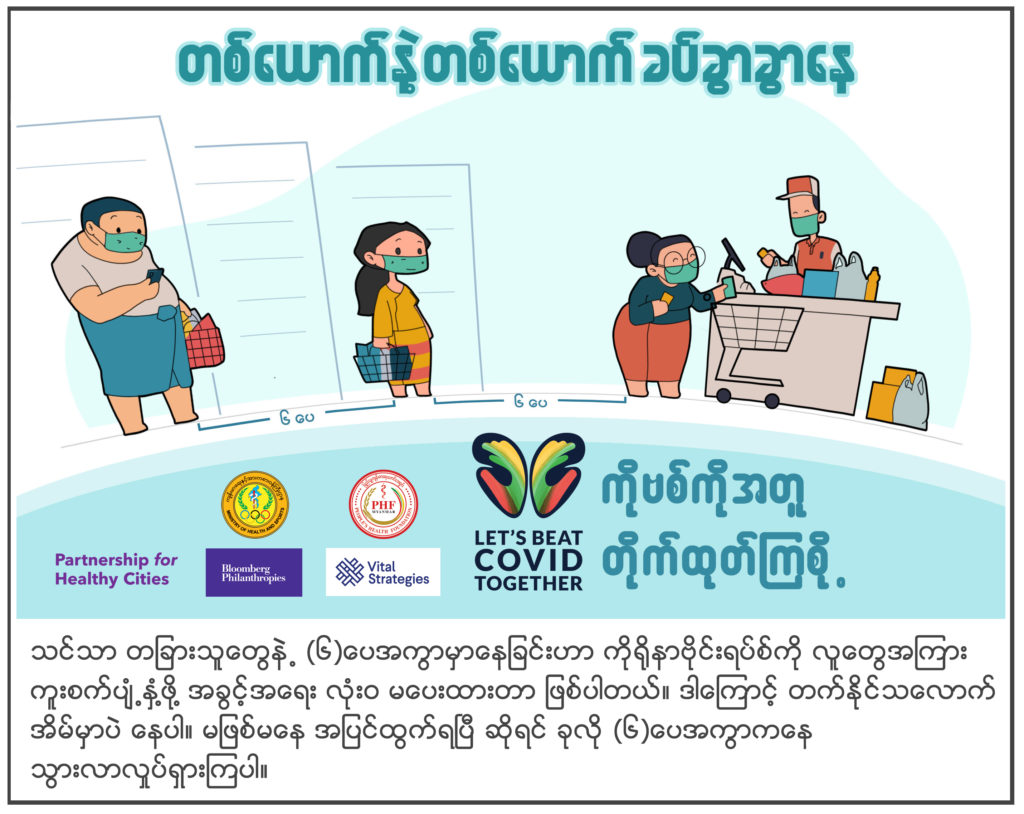
Social distancing was the theme of one poster in Yangon’s “Let’s Beat COVID Together” campaign, urging residents to “Keep Your Distance!”
For many cities in the Partnership, the top priority was getting information out to the public quickly and accurately; they leaned on Vital Strategies’ evidence-based COVID-19 communication resources to adapt messaging onto TV, radio and social media, as well as posters and video screens in waiting rooms and other public areas.
Yangon’s campaign went live on April 8, 2020. The “Let’s Beat COVID Together” radio campaign launched first, airing in heavy rotation; a television spot focusing on the importance of social distancing then ran on national channels with fully donated airtime. A Facebook campaign followed, reporting an online reach of 3 million by the end of June.
Philadelphia, U.S. hired local artists
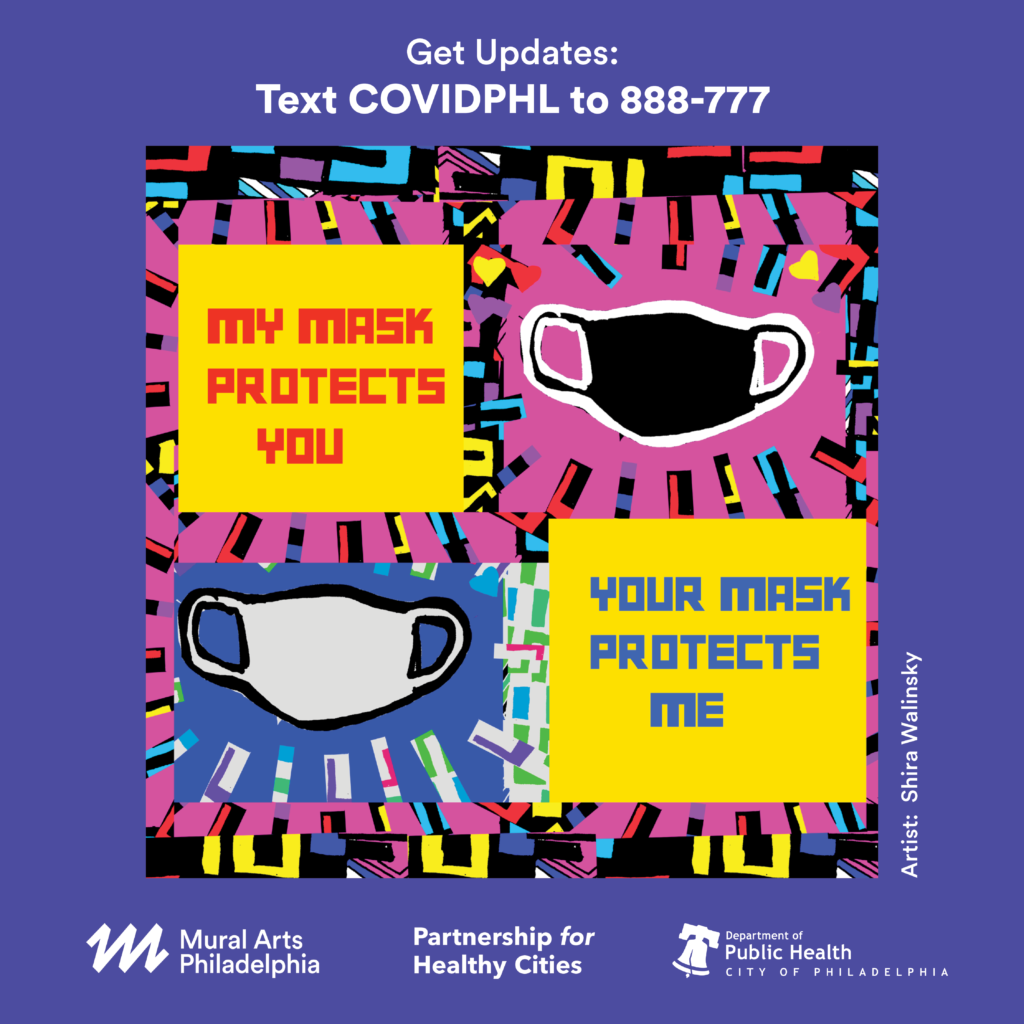
Local Philadelphia artist Shira Walinsky designed this “space pad” decal encouraging mask use.
Attention-grabbing visuals have proved to be helpful for encouraging adherence to public health and social measures, especially as the pandemic heads into its second year. A number of Partnership cities found unique local imagery for their campaigns.
In Philadelphia, the Department of Public Health worked with Mural Arts Philadelphia to enlist local artists to create decals and posters promoting physical distancing in high-traffic public places.
A total of 24 artists participated, with 2,029 indoor and outdoor space pads (decals on the ground) installed and 10,952 posters and banners placed at 255 locations in neighborhoods throughout the city. The images could be seen for months at local food distribution sites, grocery stores, bodegas, pharmacies, transportation hubs, sanitation centers, parks and libraries—with materials available in nine languages: English, Spanish, Mandarin, French, Arabic, Russian, Vietnamese, Khmer and Korean.
Cali, Colombia promoted cycling for health and safety
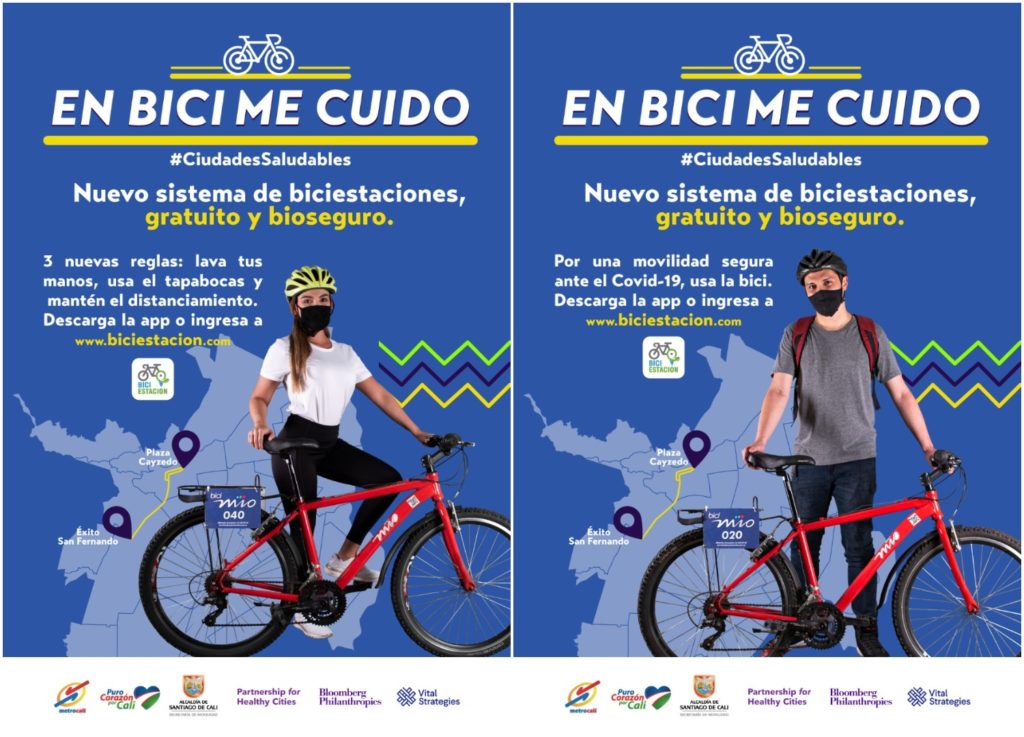
Cali’s social media campaign included graphics encouraging use of the city’s new free bike share “for safe mobility during COVID-19.”
A surge in cycling during the pandemic—as a means of socially distanced travel—has prompted city governments in many Latin American cities to respond with new bike lanes and a range of other services. In many cases, the idea is not just to meet the immediate demand but to use the situation to gauge public support for more permanent cycling support such as infrastructure improvements and new policies.
Cali created a free bike share program, and when bike repair was officially declared an essential service, making it exempt from stay-at-home orders, the city hired a mobile repair team—the Bike Doctors —also free of charge to residents. The idea behind the city’s Partnership-supported communication campaign was to promote both projects as tools for combating the pandemic, not just for transport but as a vehicle for promoting the 3Ws through social media. The project caught on with residents—almost 4,000 bikes were repaired between September 2020 and January 2021—and Cali’s mobility secretary made it a pet project
Athens, Greece reached out to communities in need
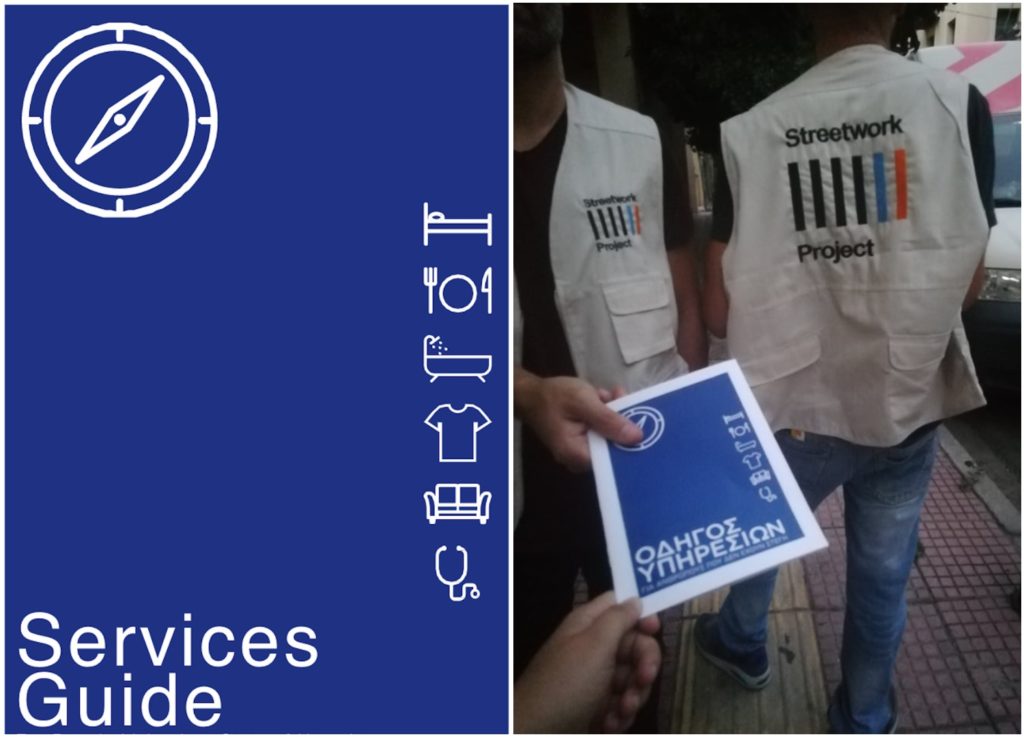
Athens created guides for people who inject drugs, unhoused people, immigrants and sex workers with information on COVID-19 safety measures and how to access services during the pandemic.
The Partnership supported various targeted urban communication strategies and initiatives including translating COVID-19 information into languages accessible to all residents; considering whether ethnic or other minorities have particular needs to address and distributing materials through trusted local leaders.
Athens, already working with the Partnership on overdose prevention, set out in its campaign to address a shortage of services and information during the pandemic for people who inject drugs, unhoused people, immigrants and sex workers. These already isolated communities were often left stranded by stay-at-home orders.
The result was the creation and distribution of more than 10,000 easy-to-read guides and flyers highlighting public health messages on hygiene and physical distancing as well as information on the current landscape of prevention and support services.
Kyiv, Ukraine fought COVID-19 misinformation
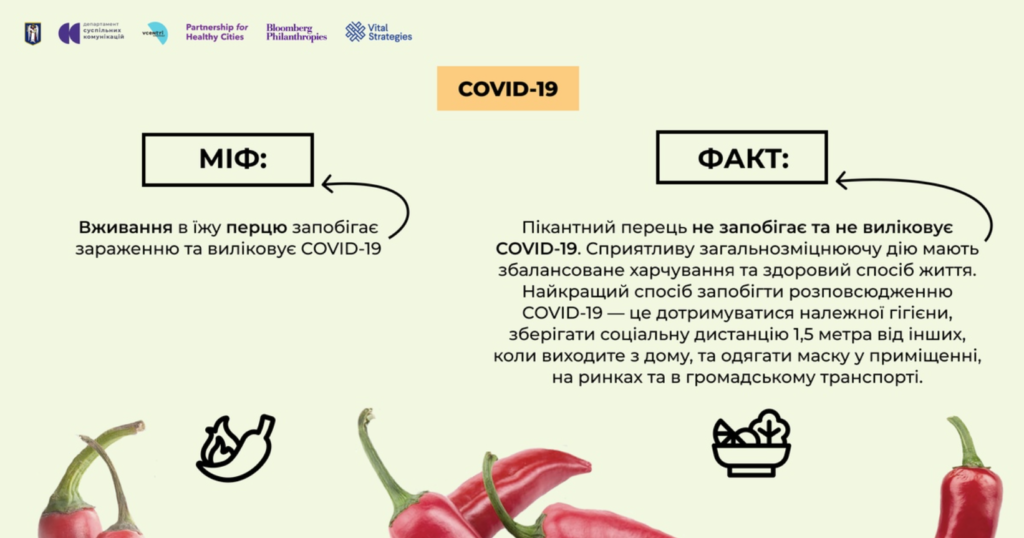
This Kyiv social media graphic contrasts a “myth” about peppers curing COVID-19 against basic “facts” such as that the best protections are wearing a mask, watching your distance and washing hands.
Misinformation about COVID-19 has been a stumbling block for public health officials from the start of the pandemic. Inaccurate rumors—for example, that hot weather, eating red peppers or drinking lemon juice will protect you from the virus, or that it only affects rich people or was manufactured as a weapon—can get in the way of known facts and hinder efforts to protect people.
Kyiv ran a multi-pronged campaign for several months in 2020 that was focused on dispelling myths about COVID and distributing information about the 3 W’s. Radio messaging reached almost a million people, Facebook reached 400,000 and thousands of stickers and posters were placed around the city. Materials were created specifically for voters participating in local elections, for schools, public transportation and year-end holiday etiquette.
For cities, strong communication messaging is key to keeping residents safe and informed. As the pandemic continues and new information emerges, the Partnership for Healthy Cities is helping cities stay current and use communication strategies that will reach urban residents most effectively.
For more about COVID-19 campaigns in Partnership cities, check out this video.
Learn more about the Partnership for Healthy Cities COVID-19 Response Center: https://cities4health.org/
Follow us on Twitter: @VitalStrat
About the Partnership for Healthy Cities:
The Partnership for Healthy Cities is a prestigious global network of cities committed to saving lives by preventing noncommunicable diseases (NCDs) and injuries. Supported by Bloomberg Philanthropies in partnership with WHO, as well as Vital Strategies, this initiative enables cities around the world to deliver a high-impact policy or programmatic intervention to reduce NCDs and injuries in their communities. For more information, visit: https://partnershipforhealthycities.bloomberg.org/
The Partnership for Healthy Cities COVID-19 Response is part of the $40 million Bloomberg Philanthropies COVID-19 Global Response Initiative. By collaborating with the WHO and Resolve to Save Lives, an initiative of Vital Strategies, the Partnership for Healthy Cities COVID-19 Response is working hand-in-hand with the world’s leading experts on epidemic prevention.
